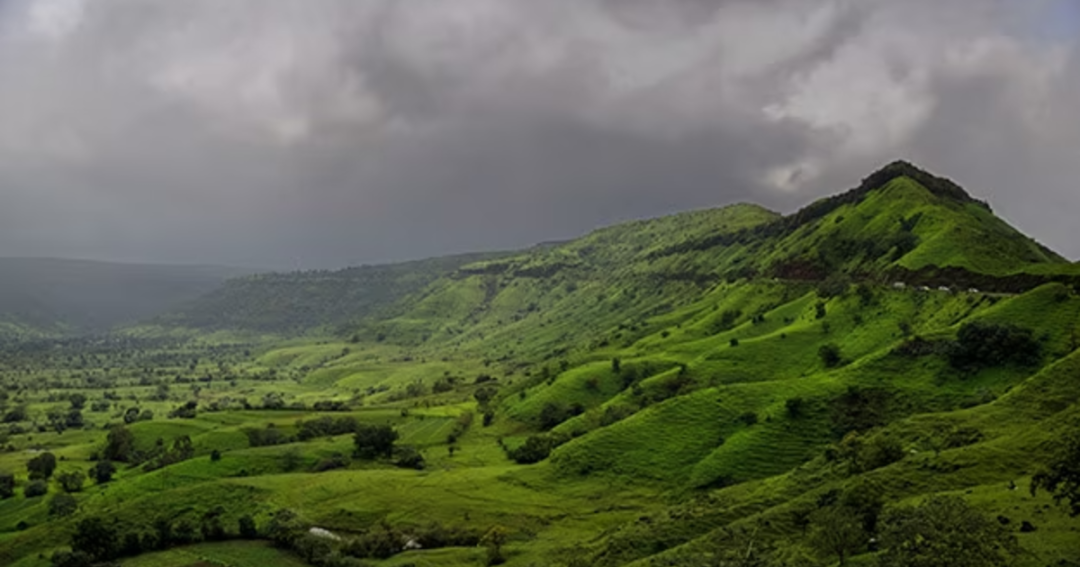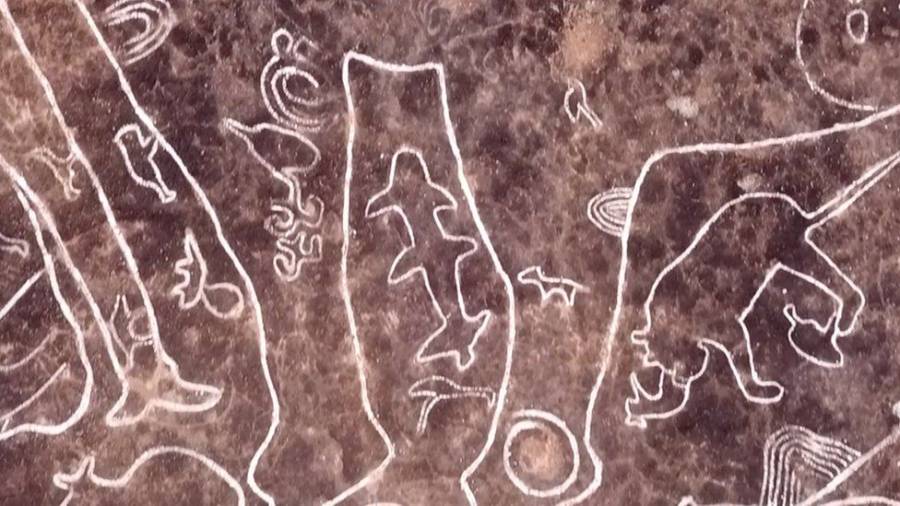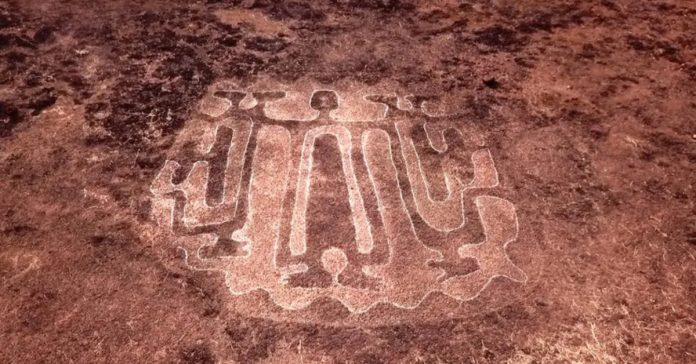
In India’s Konkan region, spanning the coastal districts of Maharashtra and Goa, over 1,500 petroglyphs carved into laterite plateaus have surfaced as a testament to a lost civilization. These rock engravings, found across 70+ sites like Kasheli, Barsu, Devihasol, and Ratnagiri, are estimated to be 12,000 years old, based on radiocarbon analysis of nearby organic deposits and geological surveys by the Archaeological Survey of India (ASI). Unearthed since the 1990s by local villagers and later mapped by state archaeologists, they predate the Indus Valley Civilization by over 7,000 years, making them among India’s oldest known artworks.

The petroglyphs, etched with stone tools into rust-red laterite bedrock, showcase a stunning array: 60% depict animals—deer, tigers, rhinos, wild boars, elephants, peacocks, and sharks, while 20% show human figures, often in hunting poses or abstract rituals, and the rest are geometric shapes like spirals and grids. One standout at Ratnagiri’s Usgalimal site is a 15-foot-long carving of a bull, its horns spanning nearly 6 feet, alongside a rare human figure with a bow. Another at Barsu features a 10-foot rhino (extinct in western India for millennia) suggesting a wetter, forested ecosystem 12,000 years ago, post-Ice Age, when sea levels were 100 meters lower, per paleoclimate data.

These carvings vary wildly in size, some as small as 6 inches, others exceeding 20 feet—and depth, with grooves up to 2 inches deep, hinting at prolonged labor. Sites like Edakkal in Kerala (a related find) suggest a Mesolithic origin, 10,000-12,000 years ago, but Konkan’s sheer volume, over 400 petroglyphs in Ratnagiri district alone, sets it apart. No skeletal remains or tools directly tie to the artists, though ASI found microliths (tiny stone blades) nearby, dated to 10,000 BCE via thermoluminescence, hinting at a nomadic hunter-gatherer culture on the cusp of agriculture.

The petroglyphs’ purpose remains elusive. Were they territorial markers, totems for shamans, or maps of a vanished world? Their coastal spread (70 sites across 200 miles) suggests a shared tradition, yet no written records exist. Today, they’re at risk: 10 sites face quarrying damage, per a 2023 Maharashtra government report, despite tentative UNESCO World Heritage status since 2018. With 12,000 years of secrets locked in stone, the Konkan petroglyphs demand both study and protection, before their stories fade forever.

